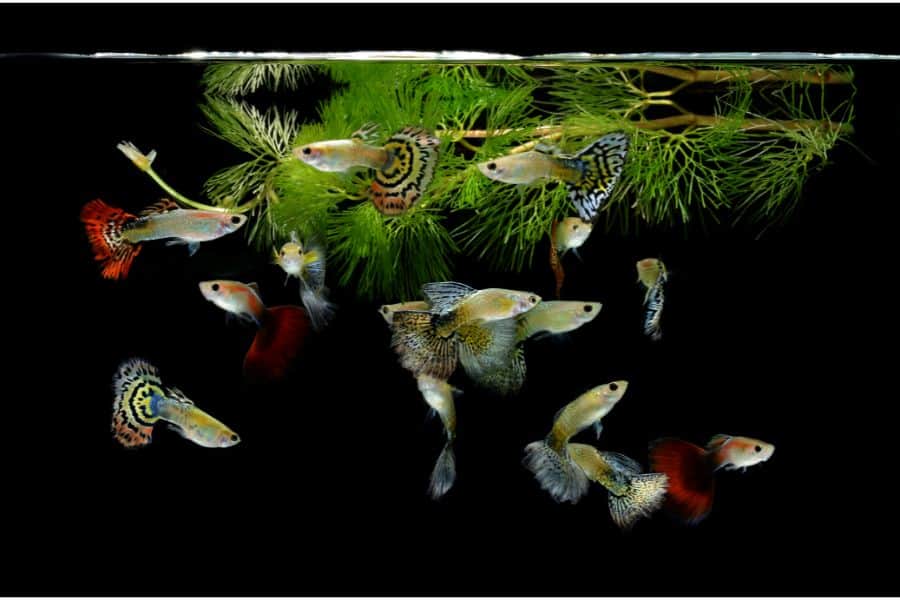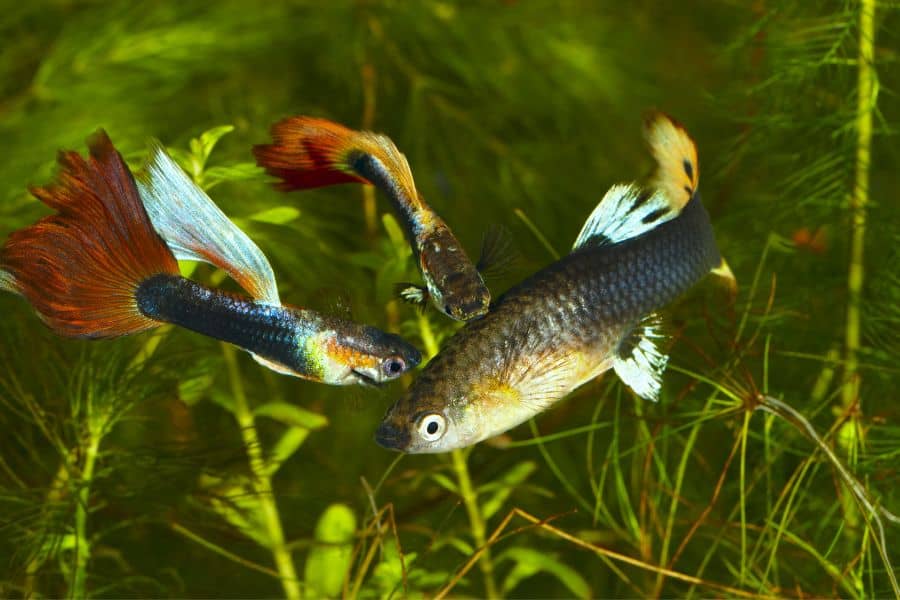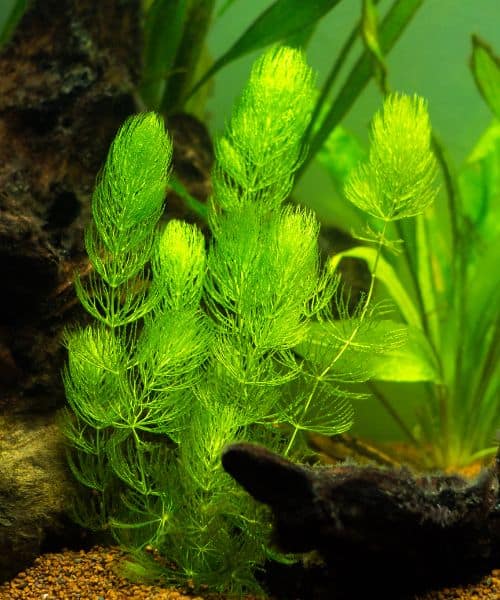Guppies are one of the most popular aquarium fish. While growing only from 2-6 cm long, they are attractively colorful and multiply fast, thus earning them alternate names like the rainbowfish and the millionfish.
The guppies we see for sale in pet shops are in large quantities, kept bare without plants, and that is why some home aquarists adopt this kind of set-up.
Yes, guppies can survive without plants. However, this should NOT be the case for a guppy tank. Guppies love plants, and having a floral asset in your tank increases their survival and happiness level.
In this article, we present the best plants for guppies and the benefits that come along.
Benefits of Plants for Guppies
Plants increase the aesthetic beauty of your guppy tank. Nevertheless, this should not be the only reason since plants have benefits for your guppies.
Provide Cover and Oxygen
Have you observed how fast guppies swim when placed in a bare naked tank? Consider it restlessness since they are exposed, and this swimming trait requires a lot of energy for the guppy.
Especially if the leaves are broad, plants provide cover and shelter for your guppies. They feel protected and relaxed. Over time, each plant you place becomes a small sanctuary for your guppies.
On top of providing shelter, plants also produce oxygen. This plant trait becomes very significant, especially when your guppies start multiplying. Oxygen produced from plants can compensate for dissolved oxygen required for your growing guppy population.
Stabilize Water Chemistry
When you have an increasing guppy population, expect your biological waste (like ammonia, nitrites, and nitrates) will also increase. At normal levels, these inorganic compounds will not harm your fish.
However, if their concentration spikes, they become toxic and can potentially kill and wipe out your entire guppy population.
Fortunately, plants absorb these toxic compounds. They use them for growth and development. The more plants you place, the more toxins are absorbed.
Facilitate Mating and Breeding
Guppies become sexually mature in 10 weeks. When they are ready to mate, the plants provide a haven for males to display their long colorful fins in an elaborate courtship swimming ritual to attract females (those with just regular fins).
After the swimming courtship, the males insert their organ (gonopodium) into the female’s reproductive genitals (cloaca). Fertilization is internal, and the average pregnancy lasts for 30 days.
Guppies are livebearers. When the female guppy is ready to give birth, it will take refuge under the leaves of your plants and release live babies of up to 100 fries.
High Survival of Baby Guppies
Guppies are filial cannibals. It means they are capable of eating their babies.
With plants, baby guppies take refuge in their tight spaces. In effect, adults will have difficulty reaching their babies, thereby reducing cannibalism. Giving adequate adult guppy food also decreases the incidence of filial cannibalism.
The Best Plants for Guppies
There are hundreds of plants used in the aquarium hobby. While most of them will do fine in a guppy tank, the species listed in this section are the best plants for guppies, especially in providing shelter and a breeding environment.
Guppy Grass
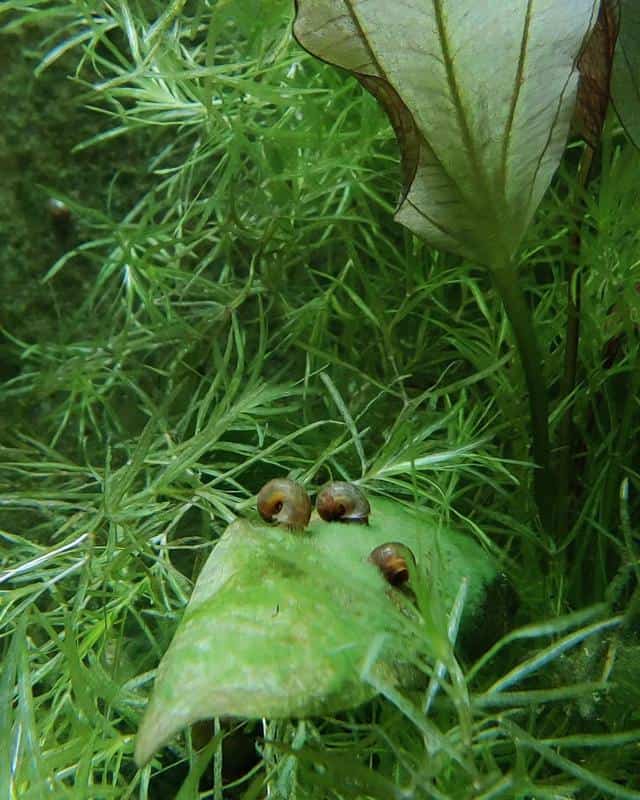
If you’re considering your guppy tank to become a future breeding tank, you might as well plant it with Guppy Grass (Najas guadalupensis).
While their leaves are thin and elongated, it creates dense vegetation where adult guppies love to hang out on their side.
When females give birth, their babies will instantaneously take refuge and swim freely inside the thick foliage without being cannibalized by their parents.
Since Guppy Grass grows fast, we recommend you trim them at the top, leaving a few inches of space just before the surface for adult guppies to swim.
Anacharis
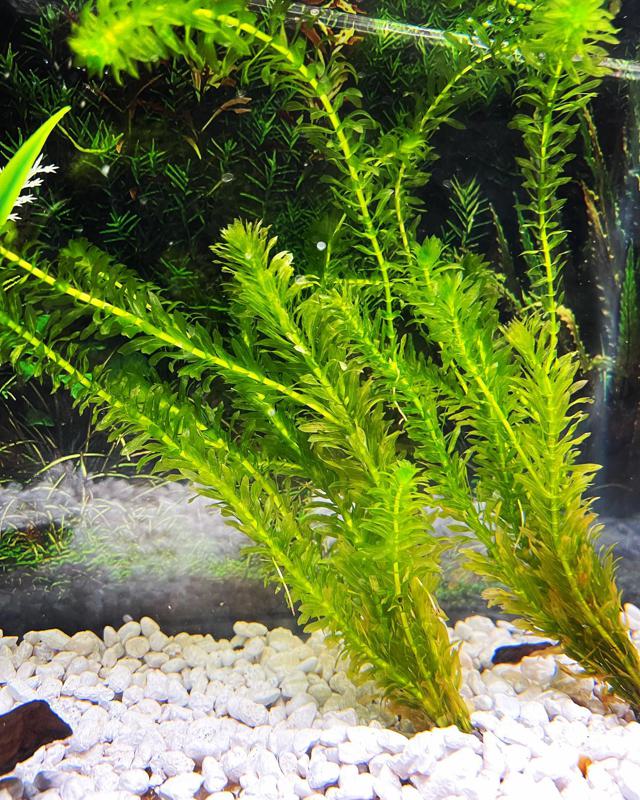
If you’re looking for a background plant for your guppy tank, consider having Anacharis (Anacharis elodea). When rooted, they create a vertical floral shelter, and adult guppies love to swim in between their leafy branches. For Anacharis to be fry-friendly, plant a bunch of plants in a single rooting.
Anacharis is not just about being a background plant. These fast-growing plants also have a voracious appetite for absorbing nutrients, balancing your water chemistry 24/7. This nutrient-absorbing trait of Anacharis is also why most aquarists place them in a tank with lots of guppies.
Guppies love to nibble on Anacharis, especially on the top part. With this, we recommend you trim the top portion and place the cuttings on the surface since they can also serve as floating plants.
Hornwort
Hornwort (Ceratophyllum demersum) is similar to Anacharis, except their leaves are finer and smoother. Adult and baby guppies love to stay near the fluffy and smooth leaves that run and spread along a main vertical branch.
The only downside with Hornwort is that adult guppies can easily penetrate and eat their babies taking refuge in this plant. To prevent cannibalism, plant a couple of Hornworts in a single rooting to create dense foliage.
Java Fern
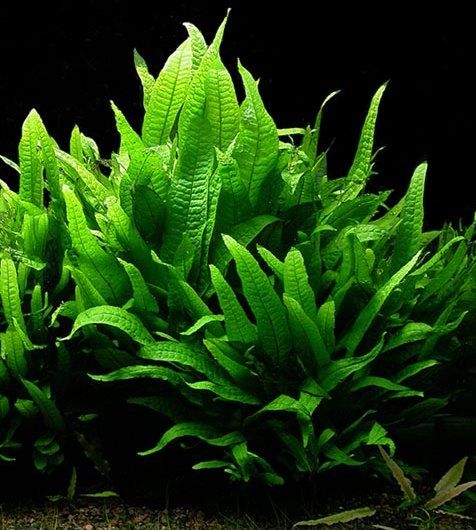
Rooting Java Fern directly in the substrate is not recommended. They are column feeders and extract nutrients in the water column. It is why Java Ferns are commonly attached to driftwood, and their planting combination is very much enticing for guppies.
Java Ferns on driftwood provide a double layer of protection for guppies, making them feel doubly safe. Aside from the broad leaves of Java Fern, the space gap created by the driftwood will be like a burrow.
An ultimate indicator that your guppy feels safe is when they take refuge in this sheltered den while hovering and being motionless.
Anubias
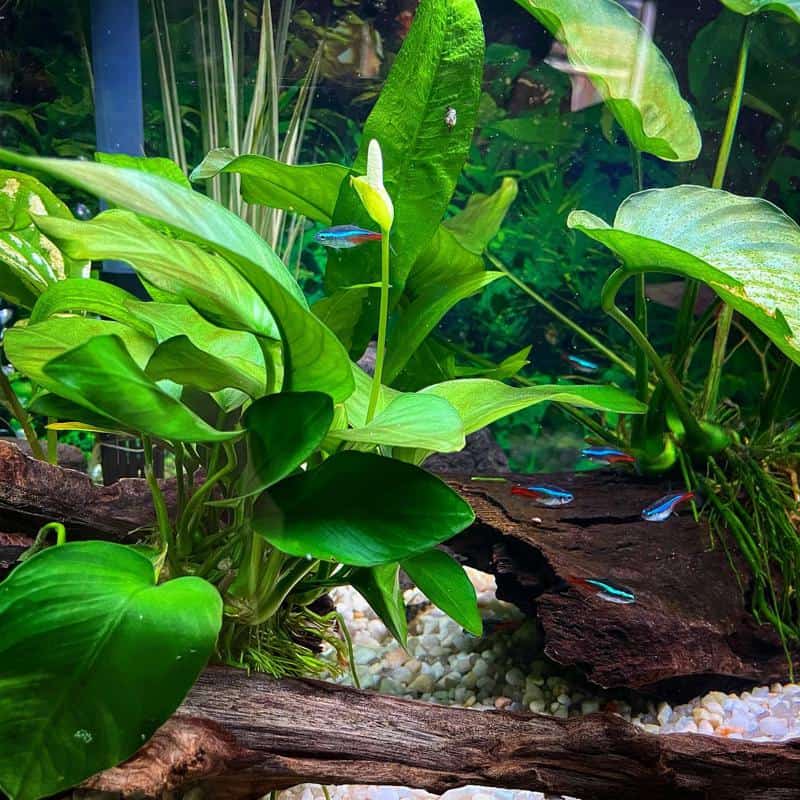
Similar to the column-feeding traits of Java Ferns, Anubias do best when attached to driftwood. But what sets them apart is how they spread out their growth.
Aside from their root system, they have rhizomes or modified plant stalks that creep along on any surface. As they spread out horizontally, new leaves develop. In between leaves is a shady space where guppies often take refuge.
Cryptocoryne
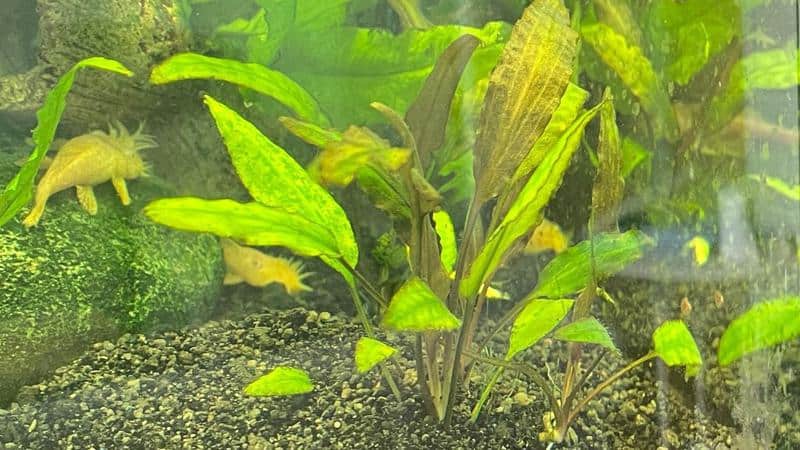
Also called Water Trumpet, the leaves of Cryptocoryne are trumpet-like in shape that grows close to the substrate.
Being a rooted plant, the space between the substrate and its leaves creates a shaded environment. To maximize this shading effect, we recommend planting several Cryptocorynes in a row where the shady gaps create a cave-like settlement, ideal for keeping pregnant female guppies and their soon-to-be babies.
Just be aware that the leaves of Cryptocoryne may fade from red or green to yellow or brown. But do not worry, and do not blame your guppies. It is caused by changes in water conditions (like lighting intensity) in a phenomenon called crypt melt.
Amazon Sword
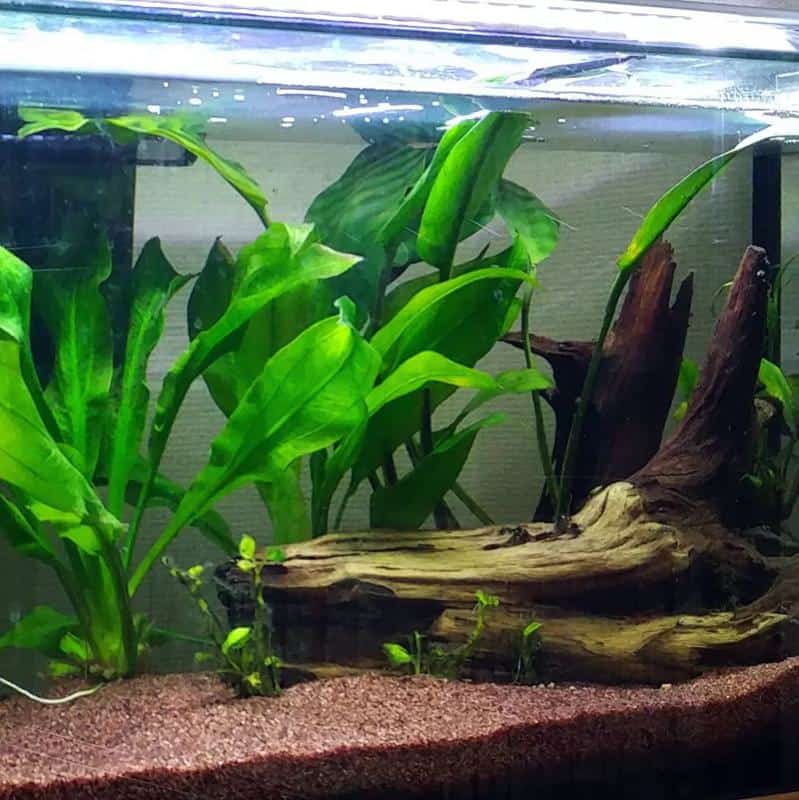
Some plants may not provide enough shelter, especially if you have a large guppy tank (like a 20-gallon aquarium). But in the case of Amazon Sword (Echinodorus grisebachii), their extensive broad leaves will shade off a significant part of your tank.
Initially, Amazon Swords may not live up to your expectation in providing guppy shelter since having vertical growth is their prime importance.
But as they grow tall and become heavy, some of their leaves will sag and bend on the side, creating a natural bungalow for your guppy. The leaf sagging of Amazon Sword is also ideal for breeding guppies as they are perfect for housing pregnant females.
Water Sprite
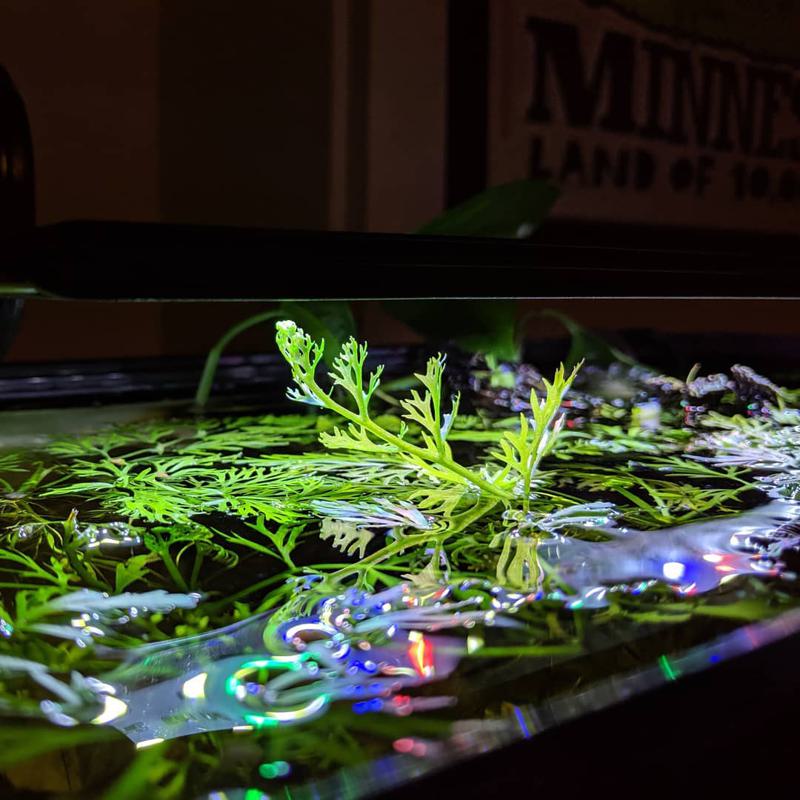
Guppies love fern-looking plants such as the Water Sprite (Ceratopteris thalictroides). Commonly used as a background plant in guppy tanks, Water Sprite will not just give you aesthetic satisfaction but will make your guppies happy too.
Their bushy-like growth is conducive to keeping adult guppies. When you plant Water Sprite, we recommend you root several plants together for it to grow into a thick dense, making it a perfect nursery for your future baby guppies.
Marimo Moss Balls
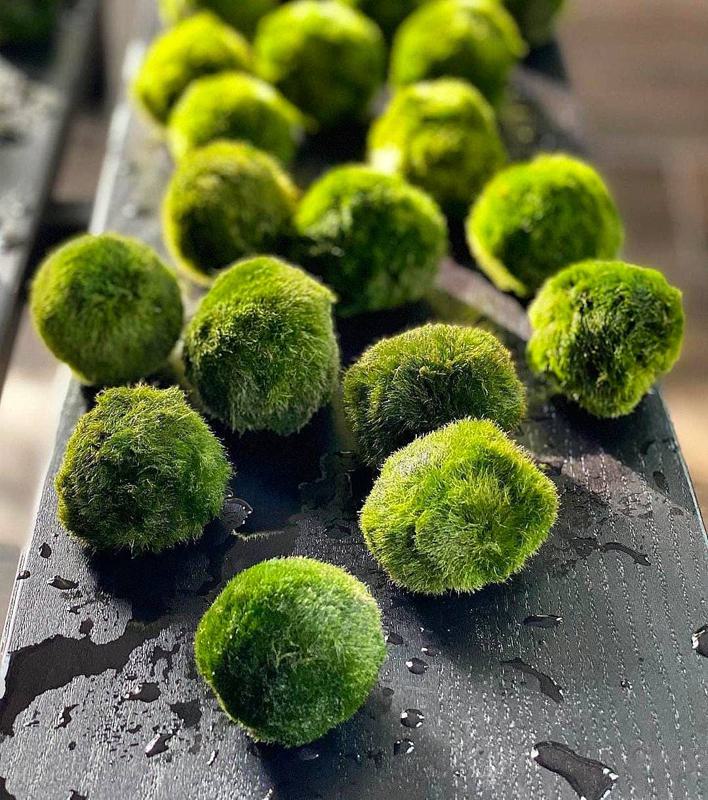
If you’re noticing an increase in ammonia, nitrite, and nitrate levels due to the increasing number of guppies in your tank, the Marimo Moss Balls (Aegagropila linnaei) may save you from disaster.
This algae that has been rolled up to form a spherical shape is reliable in balancing your water chemistry. With their fast-growing traits that need a lot of nutrients, they absorb a majority of the unwanted inorganics in your water, making your tank chemically free and guppy safe.
Moneywort
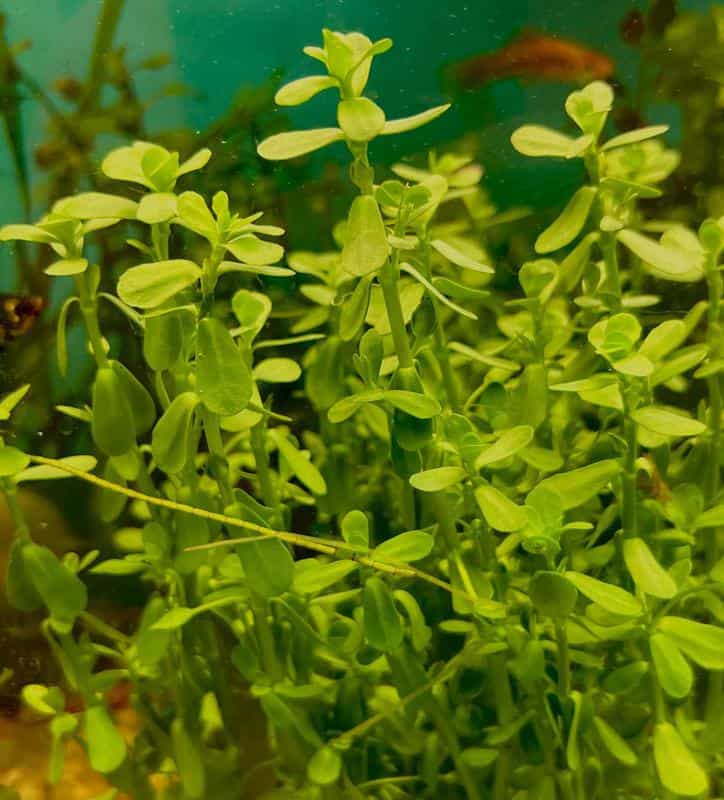
Guppies occasionally nibble on plants, and some species are easily affected by these irregular eating habits. But with the sturdy stems of Moneywort (Lysimachia nummularia), you can be at ease no matter how your guppies bite on them.
Aside from enduring fish nibbles, Moneywort are hardy plants since they can survive a wide range of water conditions, making them perfect for beginners.
Water Lettuce
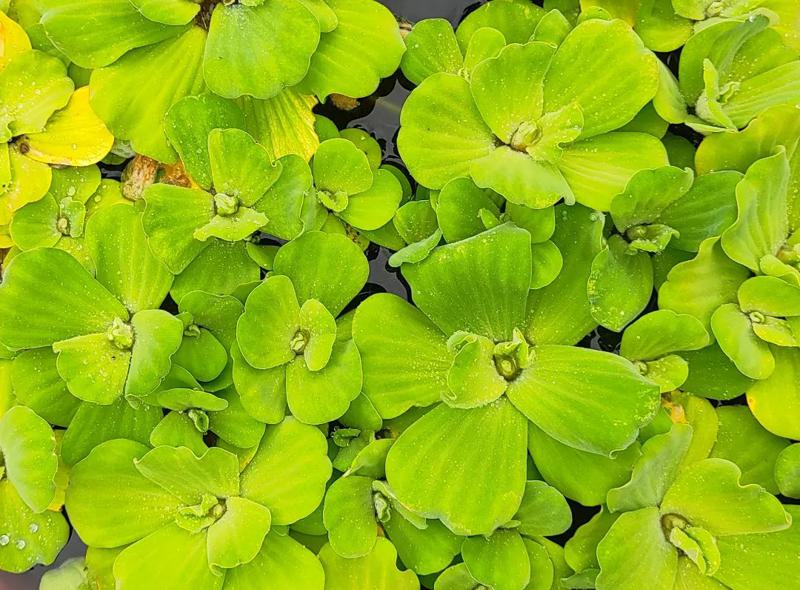
Guppies are capable of jumping out of the water. They do this not because they are unhappy with the tank you provided them but because it is their evolutionary development in searching for new water habitats.
With floating plants, you simultaneously prevent them from jumping out and sheltering them at the surface.
The large leaves of Water Lettuce (Pistia stratiotes) act as a natural roof for your guppies. The shaded surface area makes your guppies feel protected while they swim at the surface.
It’s not just the leaves of Water Lettuce that supply benefits to your guppies. Aside from absorbing unwanted nutrients (making the plants grow fast), their long-suspended roots provide a natural scenery for your guppies to swim freely like in their wild habitat. Over time, you will see more and more guppies staying under a Water Lettuce.
In this section, we only considered Water Lettuce as the sole species great for guppies. The reason for this is other floating aquariums are relatively small and their fast growing traits can potentially cover the entire surface of your guppy tank.
With this, you only need to place a few Water Lettuce, leaving enough surface area for air and gas exchange.
Java Moss
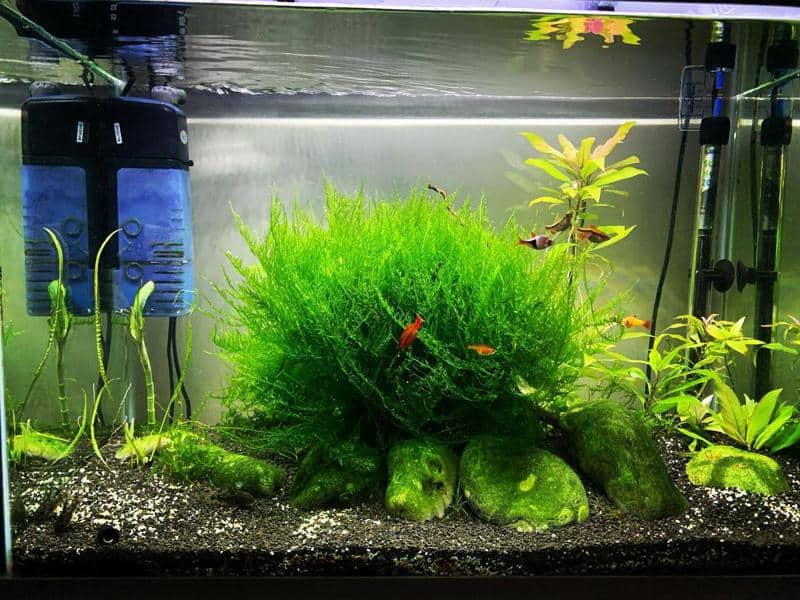
When baby guppies are born, the first thing that they do is to find a refuge. Otherwise, they will be eaten alive.
With limited swimming capabilities, baby guppies stay at the bottom, and their chances of survival will increase if you provide them with carpeting plants, like the Java Moss (Taxiphyllum barbieri).
We recommend you first plant and root the Java Moss in the substrate before you introduce your guppy. In this way, while pregnancy in female guppies takes a month, Java Moss will have time to firmly anchor itself while spreading its growth horizontally.
By the time of birth, you already have plenty of hiding places waiting for your newly born baby guppies. Don’t forget to trim them as they grow fast.
Fun fact: Java Moss doesn’t have roots. Instead, they have rhizoids that act like modified feet responsible for anchoring and spreading out the growth.
Flame Moss
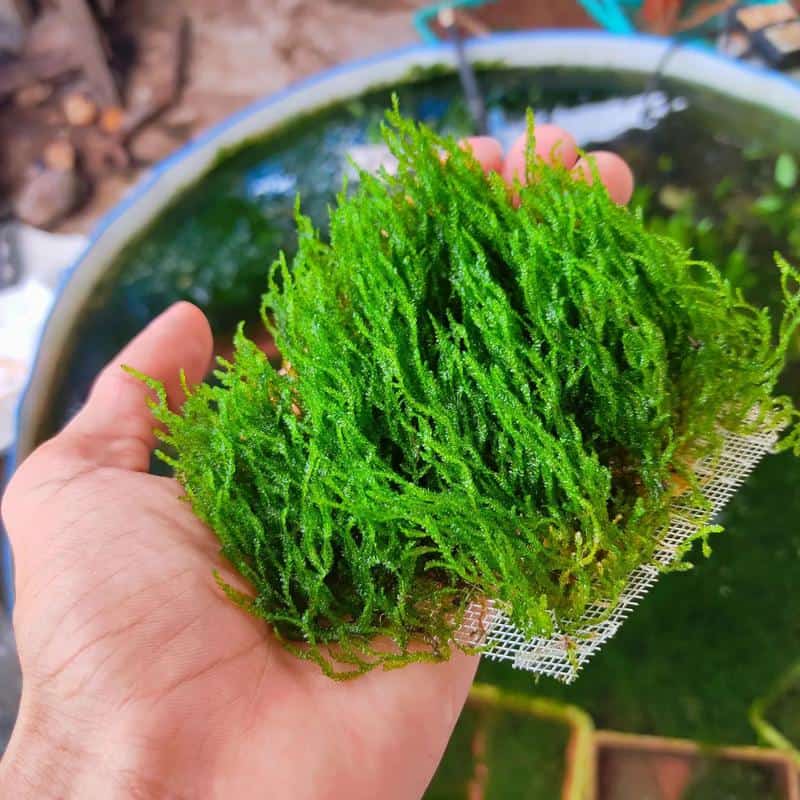
If you’re looking for a carpeting plant similar to Java Moss, yet not growing so fast, consider their close cousin – the Flame Moss.
While spreading horizontally as they carpet along the substrate, their forage still provides plenty of living spaces both for your adult and baby guppies, but with a medium vertical growth rate.
Also Read:
FAQs
Do Guppies Eat Plants?
Guppies are the opposite of goldfish when it comes to eating plants. Contrary to the nuisance habits of goldfish, guppies are peaceful and will not eat or harm your plants.
However, being an omnivore, guppies can nibble and take small bites in your plants if you don’t feed them well.
What Plants Are Toxic to Guppies
Not all plants are beneficial to your guppies. Some of them are, in fact, toxic.
Most of these plants toxic to guppies are houseplants with semi-aquatic traits commonly used in aquascaping. An example is the sharp throat-piercing calcium oxalate crystals emitted by Peace Lily, Caladium, and Philodendron.
Are Plastic Plants Great for Guppies?
Yes, but only for aesthetics, and the degree to which it can increase the beauty of your tank will depend on how elegant or intricate your plastic decoration is.
Nothing beats a live aquarium plant. Not only will it mimic the scenery of a natural guppy environment, but it also serves several biological functions which plastic decorations cannot do.
Do Guppies Sleep in Plants?
Yes. Guppies do sleep in plants. You can easily determine if your guppy is sleeping by their movement. When you see your guppy hovering motionless under a leaf (even with their eyes wide open), it is a clear sign that they are in rest mode.
Conclusion
No matter how small or large your guppy tank, you must always remember that adding plants is not just about aesthetics. It is also about how it contributes to the chemical balance of water parameters and the ecological benefits they provide to your guppies.
But just in case you’re really into aesthetics and aquascaping, please do it in a way that mimics a guppy’s natural environment.
